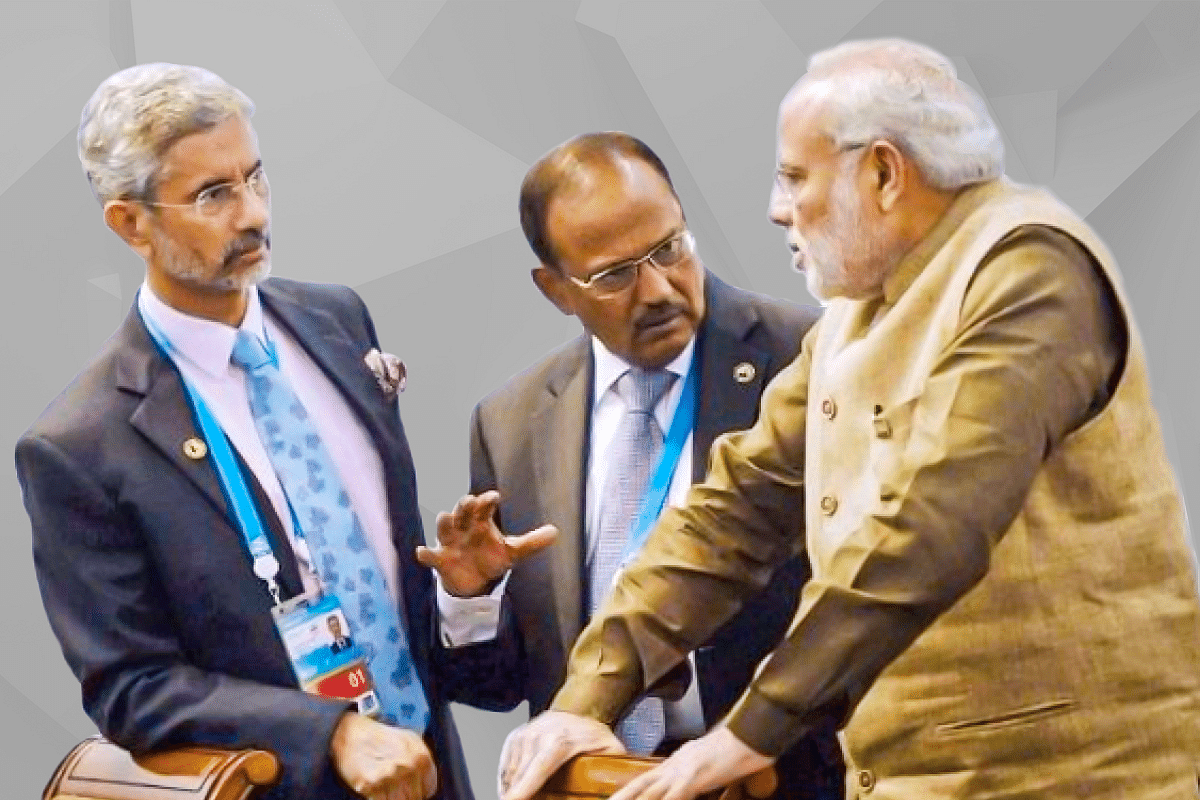News Brief
Explained: India Pakistan Joint Statement On LoC Ceasefire And Why It Is Important

Prime Minister Narendra Modi with National Security Adviser Ajit Doval and External Affairs Minister S Jaishankar.
The armies of India and Pakistan announced yesterday (25 February) that they had begun to strictly adhere to a ceasefire along the Line of Control (LoC) in Jammu and Kashmir from the midnight of 24 February (Wednesday).
The armies released a joint statement following a discussion between India’s Director General of Military Operations (DGMO), Lt Gen Paramjit Singh Sangha, and his Pakistani counterpart, Maj Gen Nauman Zakaria, reportedly on 22 February, over their established telephone hotline.
In an audio statement, Pakistan Prime Minister Imran Khan’s adviser on security affairs, Moeed Yusuf said that the ceasefire was an outcome of “behind-the-scenes” contacts and “more roads will open” in the future.
The pact
Under the pact, the DGMOs of both countries also “agreed to address each other’s core issues and concerns which have propensity to disturb peace and lead to violence” in the interest of “achieving mutually beneficial and sustainable peace along the borders”.
Both sides agreed that existing mechanisms of hotline contact and border flag meetings will be used to “resolve any unforeseen situation or misunderstanding”.
Indian Express quotes its sources as saying that India and Pakistan have been holding backchannel talks for the last three months. National Security Advisor Ajit Doval led the Indian side which engaged with Pakistan’s civil as well as military leadership.
Reportedly, Doval had met Yusuf in a third country, and had also kept communication channels open with Pakistan Army chief Gen Qamar Javed Bajwa. However, due to “public opinion management” reasons, neither side is expected to be transparent about the meetings.
Why it is important
India has accused Pakistan Army of providing cover-fire to enable cross-border terrorists the opportunity to enter Indian territory.
The cross-border firing became more serious after the relations between the countries were especially strained after the Pulwama terror attack in February 2019, Balakot surgical strike, and India’s decision to scrap Jammu and Kashmir’s special status in August in the same year.
The pact comes at a time when Pakistan is staring at a post-US exit Afghanistan and India is dealing with a resurgent China.
Also, the lack of direct and effective communication not only increases the risks of mishaps but also creates the necessity of other powers to intervene and mediate the scaling down of tensions.
A change in Pakistan leadership’s attitude has been visible for sometime.
On 2 February, General Bajwa, while on a visit to the Pakistan Air Force Academy, said, “We stand firmly committed to the ideal of mutual respect and peaceful co-existence. It is time to extend a hand of peace in all directions… Pakistan and India must also resolve the longstanding issue of Jammu and Kashmir in a dignified and peaceful manner as per the aspirations of the people of J&K, and bring this human tragedy to its logical conclusion.”
On 11 February, Yusuf was quoted as saying, “If you want peace, we have to move forward. If we want to move forward, everybody has to be rational, not ideological.”
It is possible that the prospect of drying up of US aid as the war in Afghanistan ends along with the bitter experience of Gulf countries not siding with it on Kashmir issue has encouraged the Islamic nation to pursue a non-zero sum game approach with India.
The United States White House Spokesperson Jen Psaki welcomed the agreement and said that it was a positive step towards greater peace and stability in South Asia “which is in our shared interest and we encourage both countries to keep building upon this progress”.
Introducing ElectionsHQ + 50 Ground Reports Project
The 2024 elections might seem easy to guess, but there are some important questions that shouldn't be missed.
Do freebies still sway voters? Do people prioritise infrastructure when voting? How will Punjab vote?
The answers to these questions provide great insights into where we, as a country, are headed in the years to come.
Swarajya is starting a project with an aim to do 50 solid ground stories and a smart commentary service on WhatsApp, a one-of-a-kind. We'd love your support during this election season.
Click below to contribute.
Latest